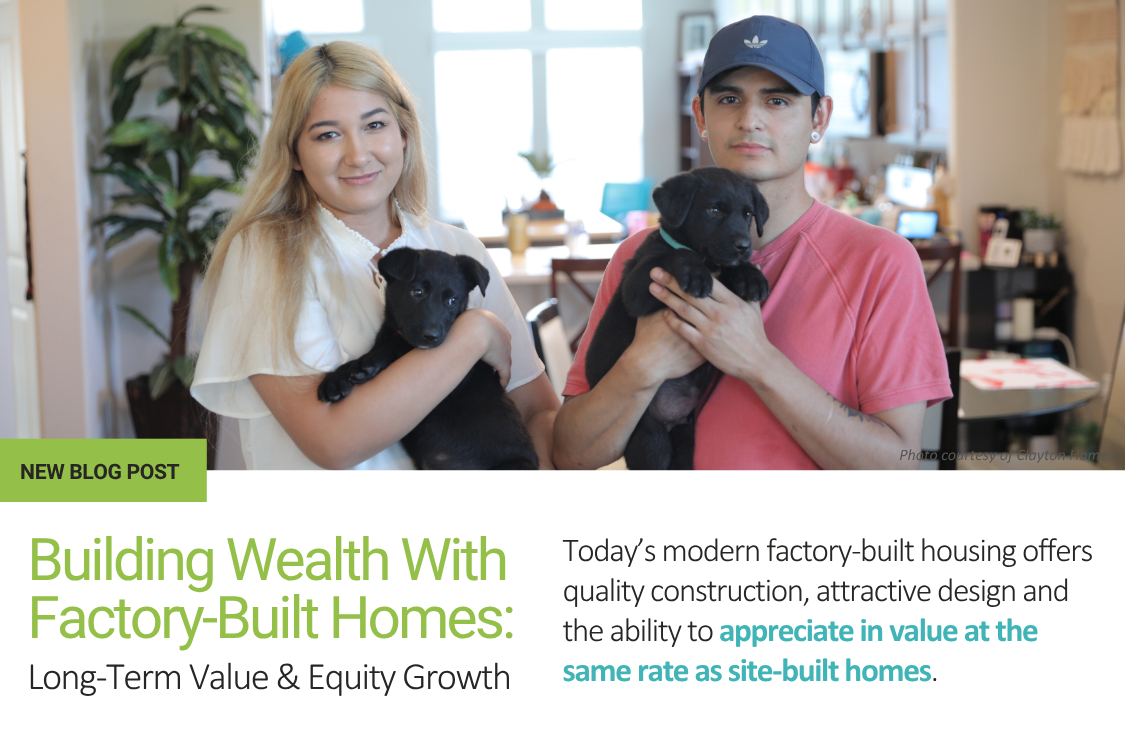Factory-built homes have come a long way from the outdated stereotypes of “mobile homes” or “trailers.” Today’s modern factory-built housing – especially CrossMod™, modular and ENERGY STAR®-certified models – offers quality construction, attractive design and the ability to appreciate in value at the same rate as site-built homes. For policymakers, nonprofits and housing professionals seeking scalable, cost-effective solutions to the affordability crisis, factory-built housing represents an untapped opportunity to help families build long-term wealth through homeownership.
Equity Starts with Affordability
Factory-built homes typically cost 10–30% less per square foot than comparable site-built homes. This lower entry point means first-time and lower-income buyers can begin building equity sooner. When financed as real property, these homes appreciate just like site-built homes, especially when sited on permanent foundations in residential neighborhoods.
Real-World Resale Value
Research by the Urban Institute and Freddie Mac shows that factory-built homes classified as real property have resale trends similar to site-built homes. In fact, a 2024 Urban Institute analysis of home sales over the past 24 years found that manufactured homes increased in value at nearly the same pace as site-built homes.
Appreciation in Action
Take the Woody family, who purchased a Next Step home in 2015 for $179,000. In a recent appraisal, the home’s value had climbed to around $320,000 – proof that factory-built homes can generate real, life-changing equity for working families.
Policy Potential
Factory-built housing is ready to meet today’s challenges: supply shortages, rising prices and inequities in homeownership. But unlocking its full potential requires updated zoning, equitable financing and support from housing leaders who see these homes not as a compromise, but as a path forward.
Bottom Line: Factory-built homes aren’t just affordable, they’re appreciating assets that help families build wealth. It’s time to give them an appropriate place in the housing policy conversation.
